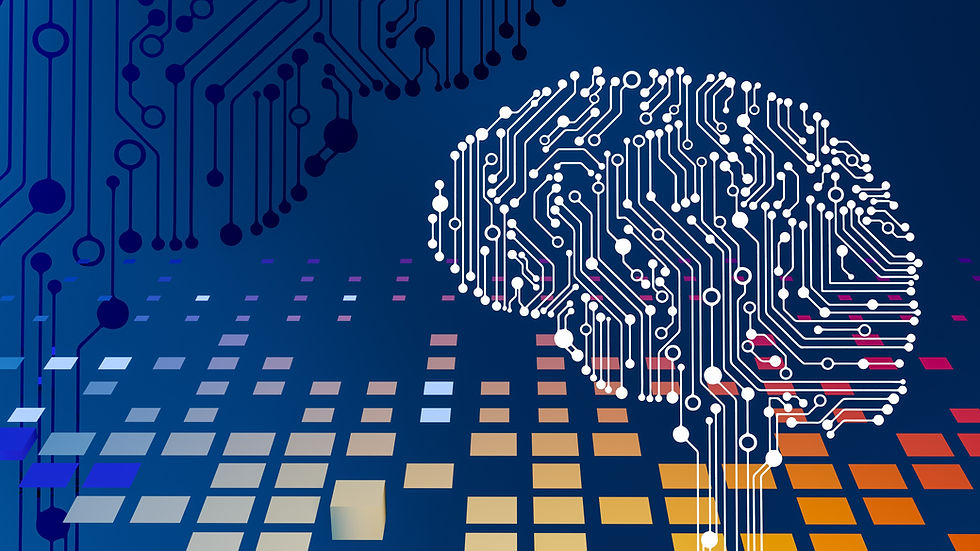Security in the Modern World
- Nathaniel Greve

- Dec 9, 2019
- 5 min read
There is a huge risk that the United States faces in the area of cybersecurity. Whether it’s the internet, banking or warfare, instances of ransomware attacks and security breaches have threatened the everyday lives of unsuspecting citizens. Not only are enterprises and governments targeted, but in the nation’s ever-growing dependence on technology, there will be no entity in the future that will be safe from hackers. However, many of these assaults can be mediated and even prevented. For these reasons, it is important to analyze cybersecurity pandemics that have occurred in the past, identify vulnerabilities that remain unresolved today, and implement preventative means to protect private individuals, companies, and the government.
Cybercrime can take place in several forms. Ransomware, when accidentally downloaded by the user from an email or website pop-up, encrypts the user’s data and threatens to delete it unless a sum of money is paid (Chen). The most infamous case of ransomware is the WannaCry attack of 2017, which infected hundreds of thousands of Windows machines worldwide (Webroot). While ransomware promises to release the data after the ransom is made, it is sometimes unrealistic for the exoneration to occur. After the WannaCry pandemic took hold in the personal computers of many, a payment was requested in the form of Bitcoin. However, due to the large influx of individuals making the payment expecting to have their files returned, the hackers were unable to effectively remove the encryption for everyone and many were left scammed.
Identity theft is more prevalent than more people are willing to realize. Many citizens hold the belief that he or she is not high-profile or monetarily worth enough to warrant someone wanting to steal his or her identity. However, the U.S. Bureau of Justice Statistics in 2015 reported that in the last year, 1.1 million Americans were victims of identity theft. Notably, half of all identity theft occurs in small amounts less than $300, but collectively totaling to billions (Dennis). This is likely attributed to criminals withdrawing everyday amounts of money to avoid being detected.
The stability of the nation is at stake when it comes to cyberterrorism and cyberwarfare. Melissa Higgins and Michael Regan are contributors to the book Cybersecurity which analyzes how the history of technology is related to international cyber threats and political turmoil:
Two significant cyberattacks took place in 2013. In May, the US Department of Defense reported hackers from China accessed plans for advanced US weapons systems, including the Patriot missile and F-35 Joint Strike Fighter. Also in May, hackers with support from the Iranian government targeted US oil and gas companies. In November 2014, the hacking of Sony Pictures led to the theft of employee information, e-mails, and thousands of documents. Following an investigation, the FBI linked the attack to North Korea. (74-75)
These attacks can be traced to be in conjunction with the tension between undemocratic nations and the strongarm of the democratic United States. At the time, sanctions were being placed on Iran as a result of the Iran Nuclear Crisis, and their oil was competing with increased fracking in the United States. Sony Pictures had produced The Interview, which mocked North Korea’s communist government and leader.
Criminals can employ a multitude of techniques to commit a cybercrime. One’s identity, for example, can be stollen by searching through a victim’s trash or by taking mail, a wallet, or a purse. Nevertheless, there is a multitude of ways to steal personal information. Unfortunately, as technology develops, new advanced and deceiving avenues for theft are developed. A recent technique is phishing: a malicious link sent in an email or in a web pop-up can be disguised as a banking or vendor’s website, and trick users to ‘confirm an account’ that when clicked secretly downloads a trojan horse program, or to ‘log in’, in which case the hacker has the user’s bank account password (Radin). These traps can result in severe losses for a private citizen or even a company. An employee in the finance department of a large corporation may receive an email from ‘Rick from IT’ that requests him to update Google Chrome by clicking the attached pdf document. Instead, a hacker can install a keystroke software that tracks log in credentials to the company’s payout database and begin making withdraws.
Perhaps the most challenging aspect of battling cybercrime is achieving international cooperation. Jurisdiction is questioned when the criminal works overseas and the crime occurs on the other side of a border. Authorities struggle to pinpoint these criminals’ location and foreign privacy laws can prevent investigative forces from obtaining incriminating details (Radin). In order to properly crush these attacks, international treaties must be agreed upon that encourage international cooperation in the interest of the entirety of the world.
An overwhelming amount of cybersecurity vulnerabilities can be prevented by personal means. Simple practices such as shredding and electronic transfer of bank statements can deter dumpster rummaging and mail theft (Radin). Webroot lists many methods of protection. Personal data can be backed-up on separate hard-drives to lessen the impact of a ransomware attack. Strong passwords that are unique and unintelligible most effectively protect user data. Letters can be substituted for symbols, numbers, and other letters. For example, SmithFamily06 can become $m1thF@mileeOh6 for improved security. Antivirus software is often qualified as a small investment with a large return. Additionally, users should use good judgment when using the internet and always check for legitimacy before opening unusual links.
Private companies may require employees to complete some degree of cybersecurity training, hire a third-party cybersecurity as a service firm, or even institute internal departments for combatting cyber threats. Microsoft has established a new center for countering cybercrime in Seattle where individuals like Bryan Hurd, director of Microsoft’s Digital Crimes Unit, analyze the location of a botnet virus (see Fig. 1). The test is finding a solution that can protect one from harm without compromising the experience of the user by making the technology slow or inconvenient.

Fig. 1. Lambert, Ken. “Bryan Hurd, Director of Microsoft's Digital Crimes Unit.” EBSCO Host Image Collection, Seattle Times, 14 Nov. 2013.
Cybersecurity is going to continue to be a major concern of individuals, companies, and the government. Every year, more and more components of everyday life become reliant on technology and therefore are vulnerable to attack. The most common forms of cybercrime are identity theft and ransomware. While losses can be large, attacks can be prevented by individual means of protection and discretion. Companies can ensure protection by putting an emphasis on cybersecurity for employees and in the budget. Internationally, peace must be ensured between rivaling governments to work together to fight cybercrime in order to protect national databases and private citizens.
Works Cited
Chen, Brian X. "How to Protect Yourself From Ransomware Attacks." New York Times, 18
May. 2017, p. B7(L). Gale In Context: High School. <https://link.gale.com/apps/doc/A 491896059/SUIC?u=rosw40877&sid=SUIC&xid=04a5a05b>.
Dennis, Michael Aaron. “Cybercrime." Britannica School, Encyclopædia Britannica. 9 Mar.
2018 <school-eb-com.proxygsu-sful.galileo.usg.edu/levels/high/article/cybercrime/ 1623>.
Higgins, Melissa. Cybersecurity. ABDO, 2016. EBSCOhost. <search.ebscohost.com/login.aspx?
direct=true&db=nlebk&AN=1022701&site=eds-live&scope=site>.
Lambert, Ken. “Bryan Hurd, Director of Microsoft's Digital Crimes Unit.” EBSCO Host Image
Collection, Seattle Times 14 Nov. 2013 <proxygsu-sful.galileo.usg.edu/login?url= http://search.ebscohost.com/login.aspx?direct=true&db=imh&AN=imh1143240&site=ehost-live>.
Radin, Tara J. "Identity theft." Britannica School, Encyclopædia Britannica. 17 Dec. 2013
<school-eb-com.proxygsu-sful.galileo.usg.edu/levels/high/article/identity-theft/605306#311936.toc>.
"Webroot Threat Research Reveals the Top 10 Nastiest Ransomware Attacks of 2017." PR
Newswire, 31 Oct. 2017. Gale In Context: High School. <https://link.gale.com/apps/doc/ A512377295/SUIC?u=rosw40877&sid=SUIC&xid=22186af2>.









Comments